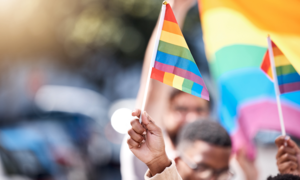On August 28, 1963, at the March on Washington, Dorothy Height sat on the speakers’ platform and listened to Martin Luther King, Jr. deliver his “I Have a Dream” speech. She had helped organize the rally that brought about 250,000 people to the National Mall. In fact, she’d been in the forefront of the civil right struggle for decades as the president of the National Council of Negro Women.


